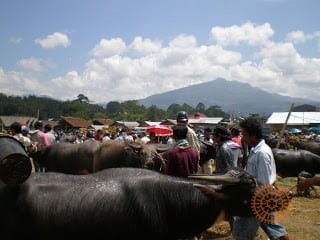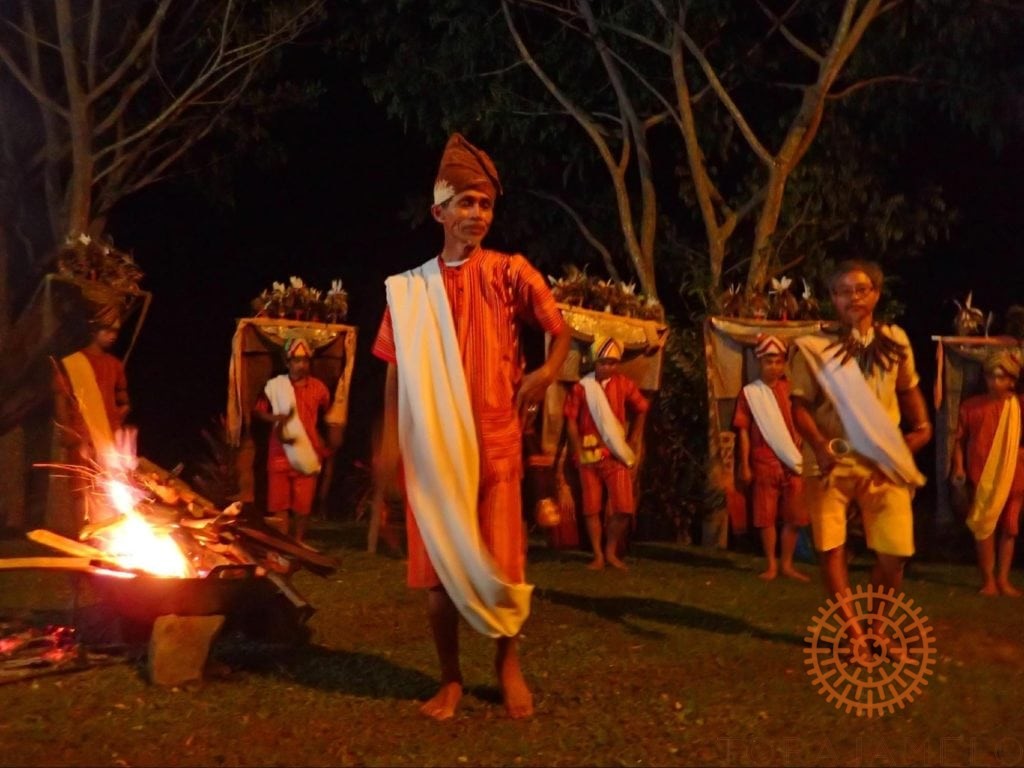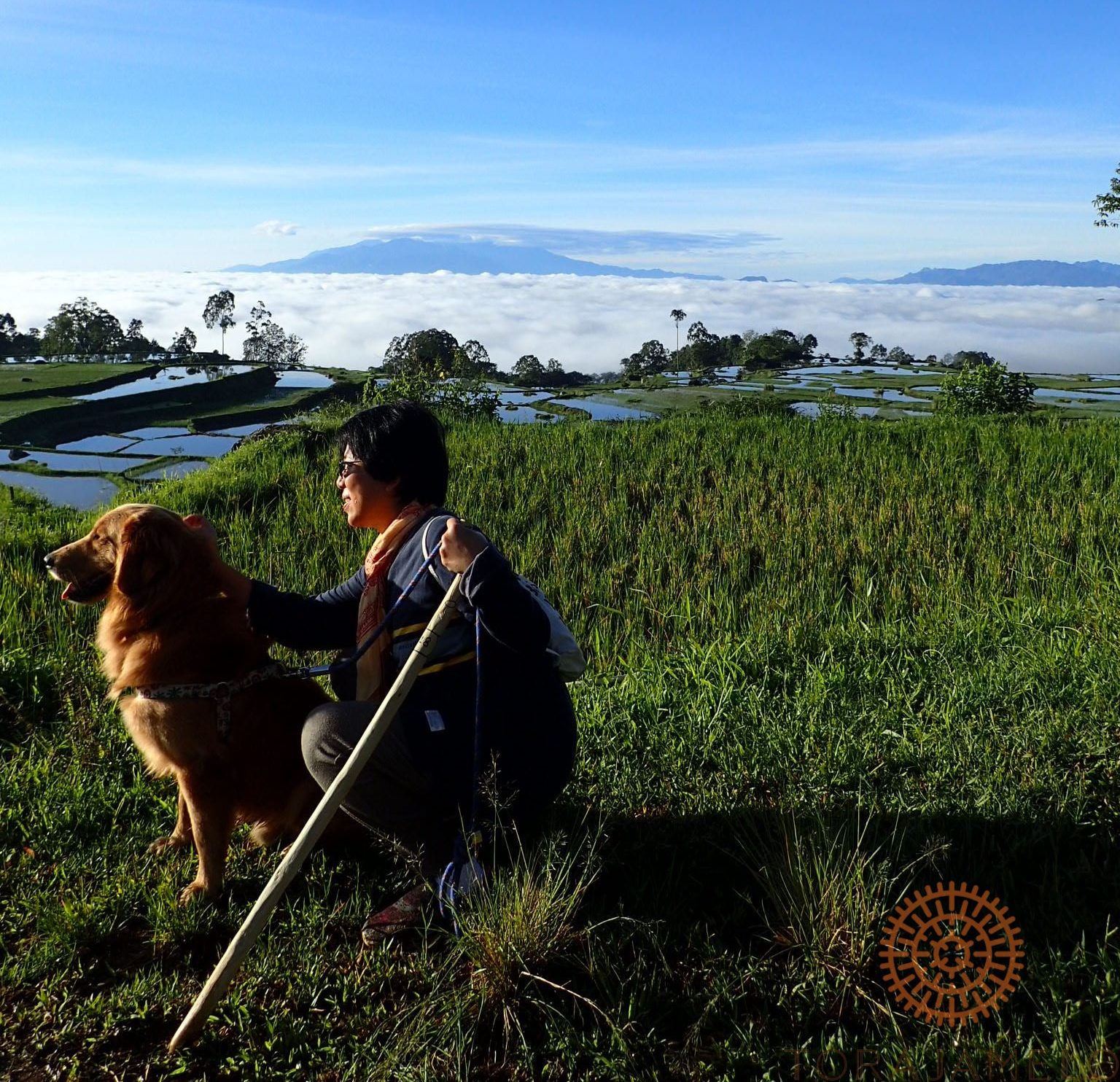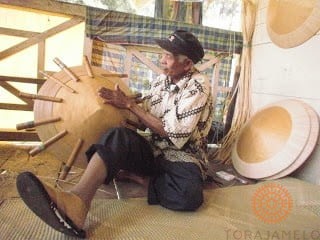
Wet Markets of Toraja
By : admin | June 28, 2018WET MARKETS OF TORAJA
Going to the malls in Jakarta from time to time is fine – to buy books, meet some friends, sip coffee and munch on donuts, etc. You look up and see the fake sky, complete with fake clouds and around you, fake plastic trees…ugh. I am not trying to be pretentious, but please take me to a wet market any day…especially the wet markets of Toraja…and my heart will sing!
The markets in Toraja go in a six-day cycle. The story goes… a long time ago, these markets have their own specialties in addition to the usual vegetables, fruits and fish. One market will be full of mats woven from the tall grass. Another will have terra-cotta pots of different sizes ready to be used to boil coffee or to cook rice. One market will have stalls of coffee beans and powder. But the biggest of them all is the main Rantepao market, which is called Pasar Bolu or betel vine leave market. Maybe long time ago, there used to be a lot of betel nut trees there. Or maybe because a lot of betel vine leaves are sold there together with betel fruit, areca nut, lime and tobacco. This mixture creates red saliva when put and munched together and is still loved by many Torajanese, especially older people from the village. As one lady tells me, “I’d rather not eat than not chew the bolu leaves.” Despite the name, the market is the main buffalo and pig market of Toraja area.
On the night before the market day, my neighbors in Batutumonga-about one hour out of Rantepao- at around midnight will start walking down to the main road carrying vegetables on their back. Actually, Torajanese hangs the bamboo basket with a strap around their forehead and the basket sitting on their back. Then they wait for a car to take them to the markets or some will continue walking down the whole 22 kilo meter. As the sun rises, you can hear the hum of the cars and trucks going down full with people. A few hours before sunset, the cars will return still full of people plus their shopping goods. More often than not, one or two buffalos and some pigs will also ride in the trucks.
On market day, sometimes you cannot take the car to cross the bridge into Pasar Bolu area, because the traffic is simply not moving. As soon as you enter the market, all your senses will perk up: the noise of people bargaining, the bright colors of the fruits and vegetables, the sweet smell of newly roasted coffee, the heat of the sun and bodies jostling together, the bitter sweet taste of the palm wine, the soft texture of woven mats. On my last trip, I took my brother, who is an IT Manager in San Francisco and he sighed happily: “Sense overload…”
I will go across to the open field in the southwest part of the market. There, in the middle of the mud, as far as your eyes can see, stand hundreds of buffalos: big and small, black and white, with or without spots. Their keepers hold them on the leash. And one thing that always strikes me is – despite the presence of hundreds of people and buffalos – it’s quiet. Nobody screams to offer you their buffalos. Nobody pushes you around. The keepers just stand quietly and wait for a buyer. The buffalos also stand or sit around quietly, munching some grass. The scene will change drastically as I reach the pig area on the other side. The pigs are squealing on the ground, trussed up on bamboo poles. The ones in the pig pens will be eating noisily. The piglets are squirming and snorting in the plastic sacks.
Then it’s time to get away from the heat. I will go back to the main part of the market, past the sellers of rock mortars and pestles. Inside, there will be rows and rows of fresh fish from Palopo in the east coast. I choose the fishmonger who smiles the most (‘Why bother spending your money on a grumpy person?’ is my policy in shopping) and buy from him a week’s stock of seafood: white jack fish, bright red tuna, fat striped prawns, blue clawed crabs, fresh silvery anchovies. Not far from him is the chicken lady. I will buy two chickens already cut up into small pieces. Next is the tahu and tempe (soy bean cakes) stalls. Then, I will buy a small container of katokkon, a mini paprika-like chillies of Toraja. I love vegetables, so I will buy a lot of them, i.e. daun paku or fern leaves, pepaya flowers, young bamboo shoots, water cress, soy bean sprouts, carrot, spinach, green beans, dried red beans, tomatoes, potatoes, shallots, pumpkins, etc. I will never forget to buy a litre of the black pamarassan or keluak powder of Toraja, cooked with fish or pork – it will become a yummy soup. If I am in the mood, I will also go to the pork area and buy some ribs. Oh, don’t forget to buy some fruits: pepaya, lime, oranges, yellow passion fruit from high mountains or markisa, purple Toraja passion fruit or terung Balanda, bananas, salak or snake fruit, kedondong (fruit with hairy seed) and sometimes durian from Palopo. A litre of freshly ground coffee and ground soybeans are a must. I love bamboo baskets and pandanus mats. A few months ago, I bought two baskets to be used as laundry containers at home. When I have guests, I usually take them to the traditional souvenir area. Over there, they can buy local costume, woven textile, jewelries, wood carving and hand-bags to take home. Pasar Bolu has everything you need!
At last, my hands laden with goodies, going past the fighting cocks area, I will walk to my car and start heading back home to the cool Batutumonga. I will start looking forward to the sixth day again. However, if the calling or need is very strong, I will go to the pretty as a picture Pasar Pagi or morning market by the Sa’dan river. A few weeks ago I went there with Andrew Zimmern and his crew from Travel Channel to shoot the Sulawesi episode of his program: ‘Bizarre World’. But that’s another story!



